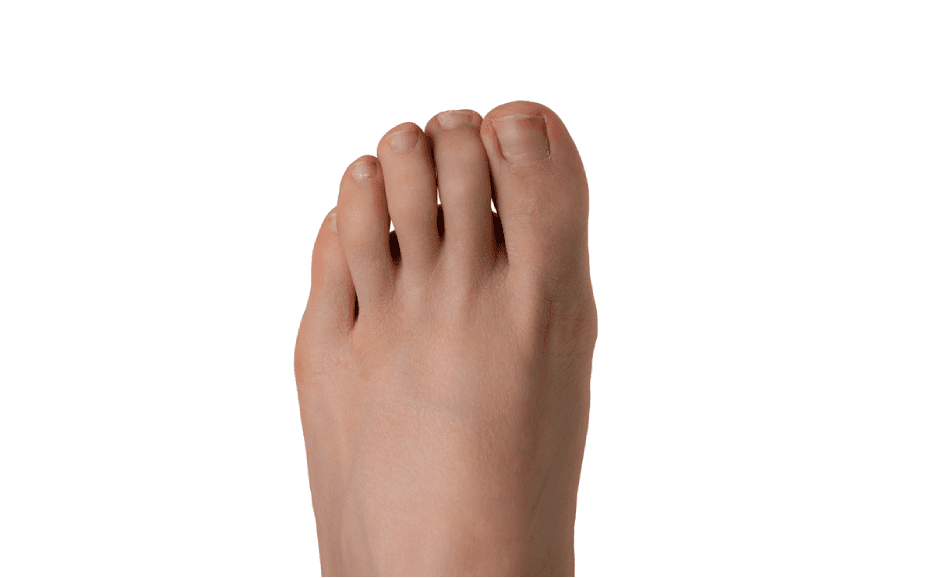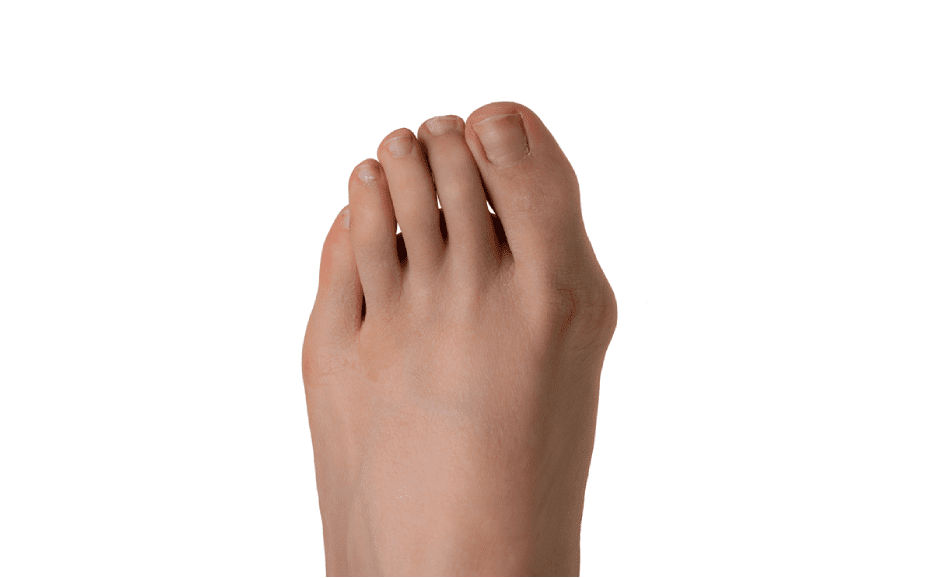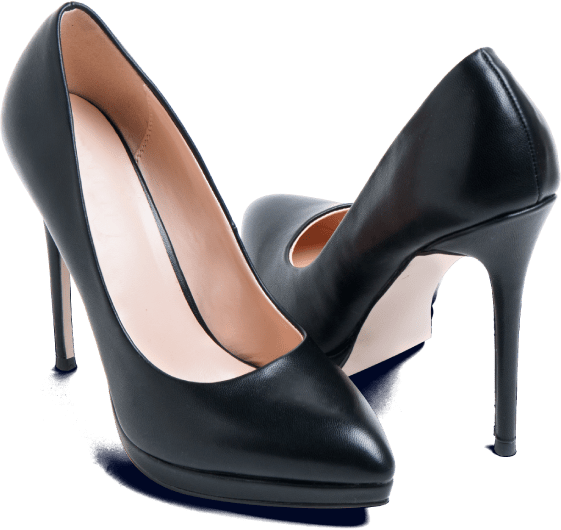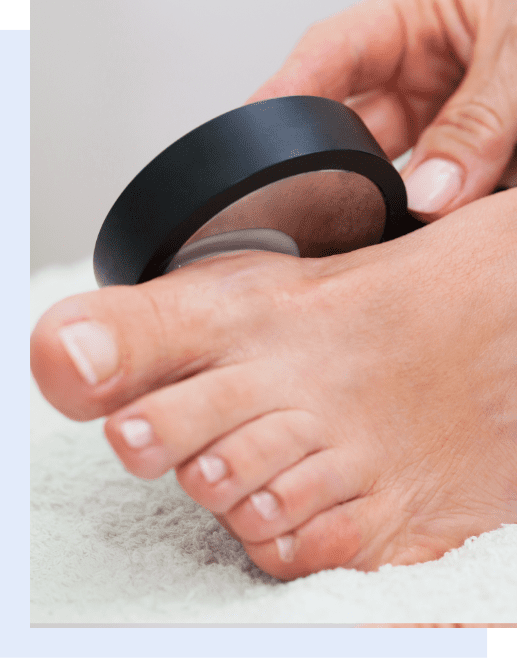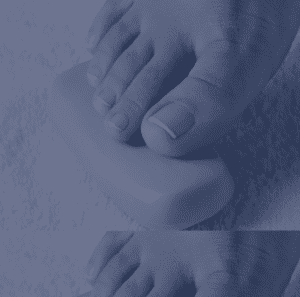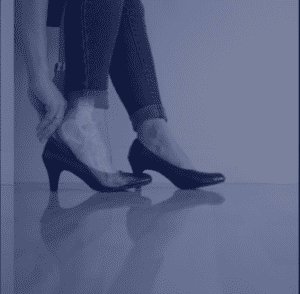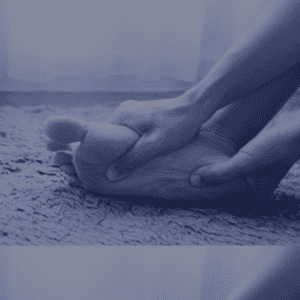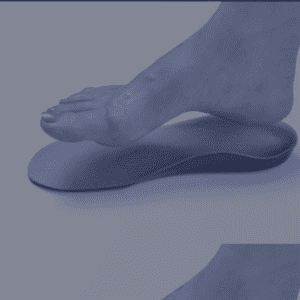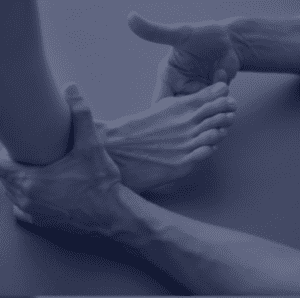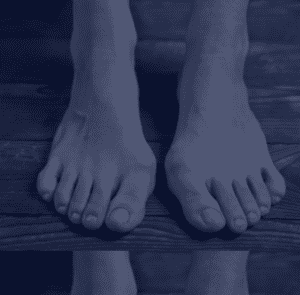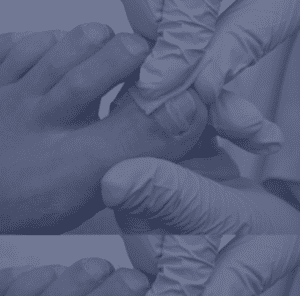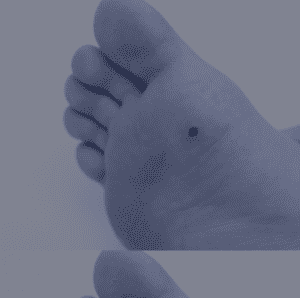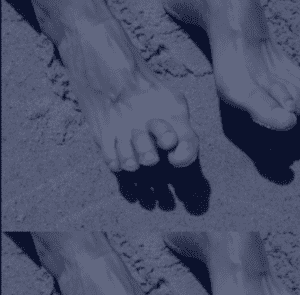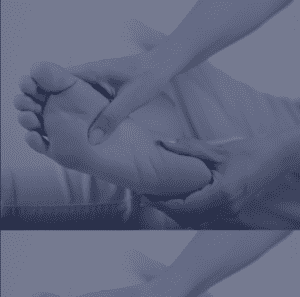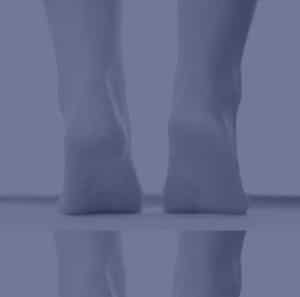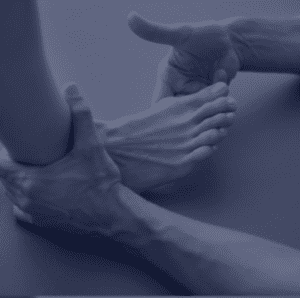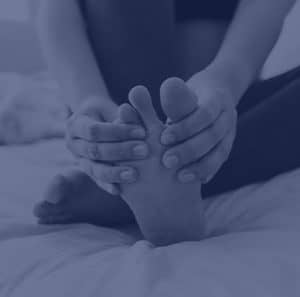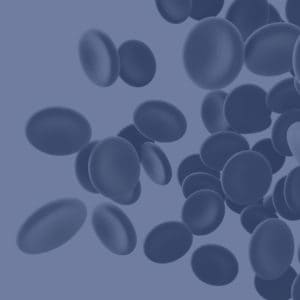about Bunions
What is a Bunion?
A bunion is an enlargement of bone at the base of the big toe. It can occur on one or both feet. The big toe becomes deviated towards the second toe—this is called “Hallux Valgus.”
The problem is progressive and can cause hammer toes and pain in the ball of the foot.
This term describes the position of the big toe in relationship to the midline of the foot. The problem is progressive and can cause hammer toes and pain in the ball of the foot.
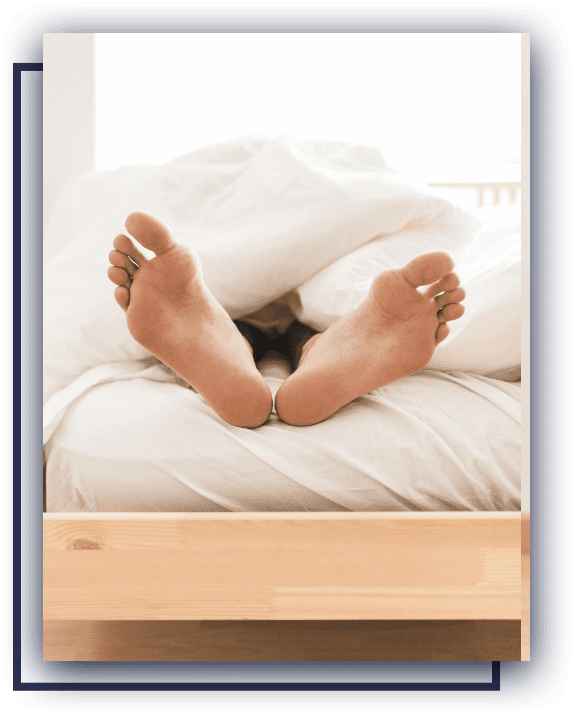
about Bunions
Causes of Bunions and Progression
Bunions are normally inherited and get worse as we age. It’s very commonly painful, varying with shoe type and the kind of work we do. Pronation causes the foot to be unstable and contributes to bunion progression. This slowly overpowers the stabilizing force of the muscles in the arch, causing the big toe to bend and become weak. Many times calluses develop on the side of the bunion or big toe because of the deviation of the big toe.
Bunions may worsen with tight, point-toed, or high-heeled shoes. Shoes that are too small can exacerbate the underlying cause. Women tend to develop painful bunions more than men.
Over time the bunion can become very painful. This causes changes in the shape of the foot and alters the biomechanics, causing general foot and leg pain. If the bunion starts pushing on the second toe it causes hammer toes; that’s why early treatment is necessary.
Our treatment
Non-Surgical Treatments for Bunions
If treated early in its progression, shoe changes, and possibly a custom orthotic, can help. Also, if big toe joint pain is present, an oral anti-inflammatory or topical analgesic cream should be tried. When you have pain in the big toe joint, that’s a form of capsulitis, which can be treated with a few injections of a mild steroid; this will normally help but will not stop the bunion progression.
Learn about Bunions
As seen on FOX4 News!
In this episode of ‘Ask the Experts’, FOX4 News is talking to Dr. Thomas Bembynista of KC Foot Care about bunions. Bunions occur for many reasons some are hereditary, and some are caused by injuries and activities shoes just aggravate the underlying problem.
Most bunions fall into a moderate category which is easily treated on an outpatient basis. Some bunions that are severe where are the big toe and second toe overlap require more extensive correction but with a very successful result. A common problem also is a bunion most people know by the turf toe or jammed big toe normally this is more on athletic people. It’s when the big toe doesn’t bend well.
When evaluating bunions and treatment it is important to make sure what do patient desires from treatment. There are conservative treatments that can reduce bunion pain and helped a patient with activities.
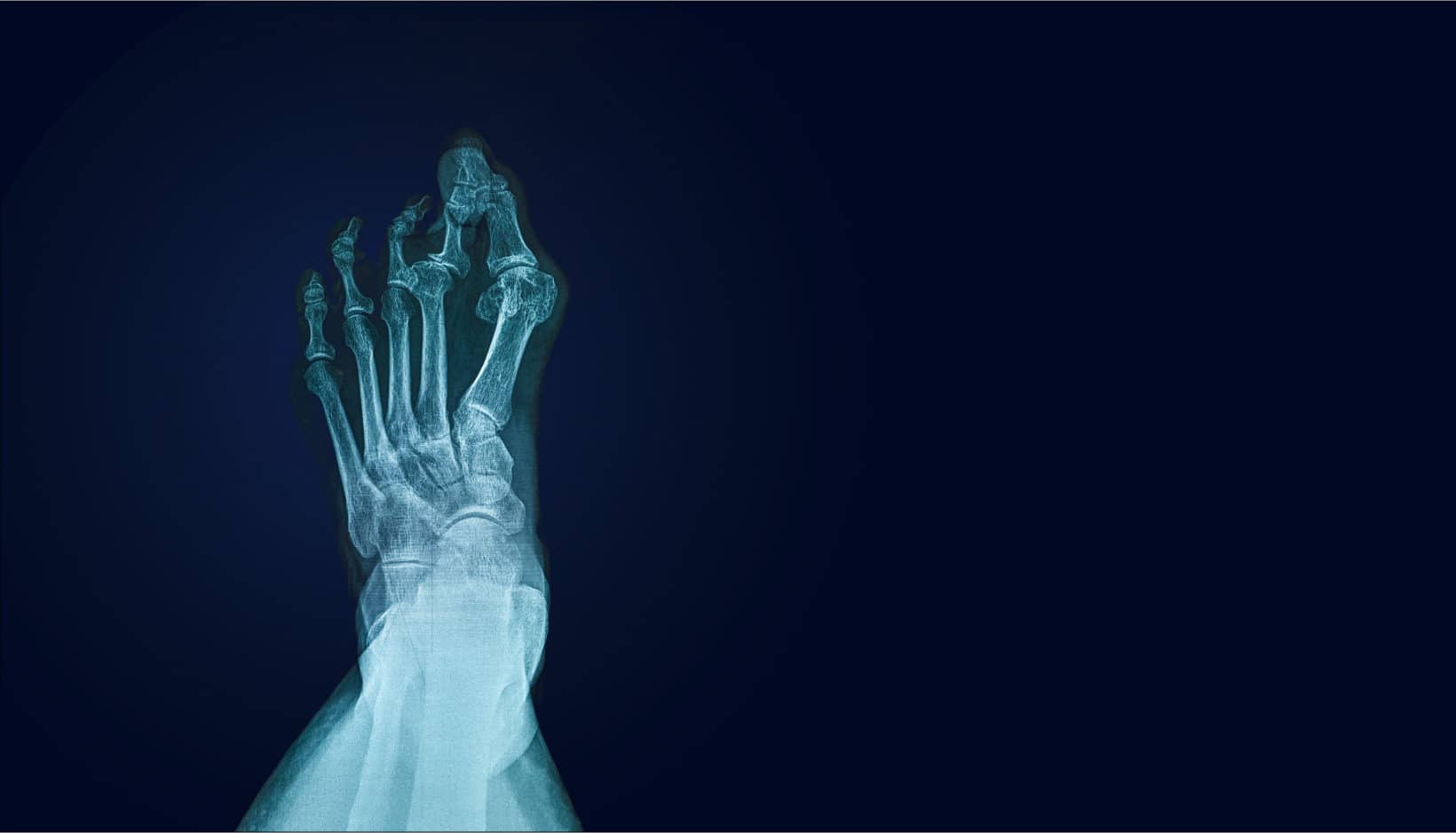
About treatment
Surgery for Bunions
As seen on FOX4 News!
If pain isn’t improved with non-surgical care then a surgical procedure is necessary. The bunionectomy is a removal of the bunion enlargement and correction of the big toe deviation with a osteotomy (cut in the bone), which is stabilized with countersunk screw fixation.
Surgery is usually outpatient under IV sedation. This type of sedation is very safe—you are breathing on your own and it is like you are in a deep sleep; then the foot is numbed and the procedure performed. The patient is given postoperative instructions and pain medication. We normally phone out your pain medication for pickup. The patient is asked to start taking the pain medication before the numbing wears off, breaking the pain cycle.
You should take the medication throughout the night and for the first 24 to 36 hours. When surgery is done outpatient, Dr. Bembynista will call you that night to make sure you’re doing well and to answer any questions. He also provides both his home and cell numbers to all surgical patients. You will see us back the following week at which time we will change your bandage and review range of motion exercises for the big toe joint. Sutures are normally removed within 2 weeks. Return to a regular shoe is normally within the first or second month.
It’s important to understand that internal fixation via screws and early range of motion reduces the time of return to regular activities,work or sports.

